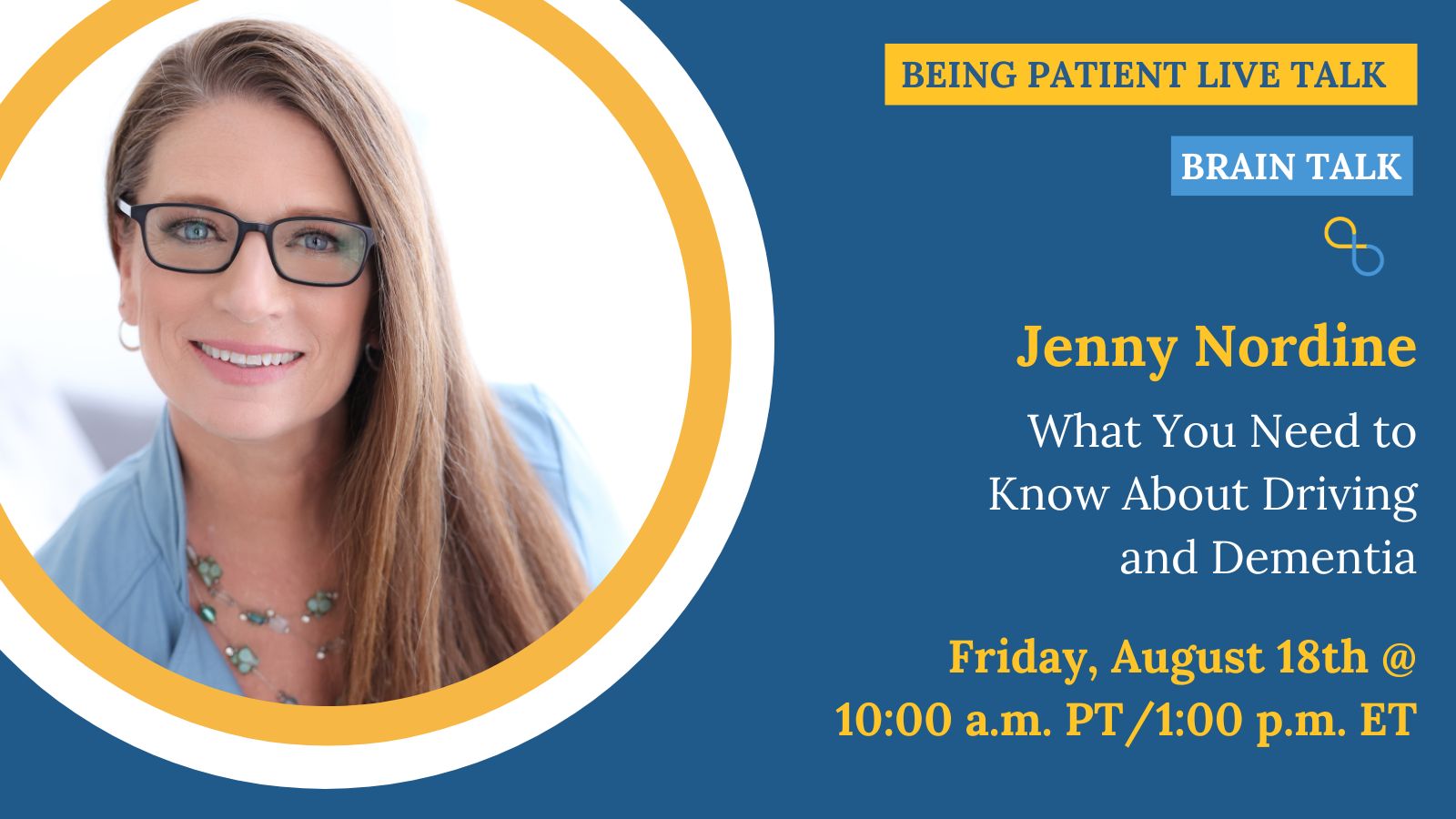Knowing when a person should stop driving can be tough — especially when they don’t think there’s any problem. Research fellow Amie Hayley tackles the question: How can you tell when it's time for an older adult to retire from the roads? Expert Jenny Nordine weighs in with FAQs about how to talk to your loved one about driving and cognitive decline or dementia.
The world population is aging. According to the latest UN reports, two thirds of people live in countries with below-replacement fertility rates. Meanwhile, around the globe, the average lifespan continues to grow. Societies are tackling questions of how to make life better for a world where there are more older adults. Research fellow Amie Hayley takes a look at the issue — and more specifically, at the question of aging and road safety — from the Swinburne University of Technology in Australia.
Australia is a nation of car owners with a rapidly aging population. Drivers aged over 70 have nearly doubled in number in the past 20 years. The trend is the same for hospitalizations and fatalities due to crashes involving older drivers. Aging itself is not a barrier to safe driving.
Even so, our ability to drive safely can become compromised as we get older. It can be difficult to know what to do if you have concerns about someone’s driving. So, how can we ensure aging family members and friends are safe on the roads? And should regular assessment of drivers over a certain age be mandatory? Some states and territories require it, others don’t.
What affects our ability to drive safety?
Driving is a complex task. A driver must be alert and respond quickly to any changes, especially in an emergency. Substance usage, fatigue and distraction all affect a person’s ability to drive safely. So, too, do many of the changes that happen with advancing age.
Declining mobility, eyesight or hearing can impact some of the more obvious skills needed for safe driving. This might include the ability to turn and check mirrors, or to hear other vehicles. Advancing age can also lead to a decline in more hidden skills of safe driving, including our ability to plan effectively, think quickly and react appropriately.
Many older people are able to keep driving safely, though, and recognizing the signs of a potential problem can be tricky. However, there are practical steps individuals, families and friends can take to ensure the safety of older drivers and other road users.
What rules apply?
Licensing requirements for senior drivers vary around the world. Do these differences in rules and regulations have a major impact on the safety of older drivers? Not really. Some early research showed older drivers in jurisdictions of Australia with more stringent rules no less likely to be injured or killed in a traffic crash than people in states with voluntary reporting requirements. This finding points to the need for multi-tiered – rather than simply age-based – assessment for identifying older at-risk drivers. It requires the involvement of a range of health practitioners in more elaborate types of assessment.
Despite these differences in rules and regulations, a common theme is to ensure a person can drive safely, independently and legally. Exactly what that means, and how it is evaluated, is decidedly less clear.
How do you know if someone is safe to drive?
There is no standard way to test a person’s fitness to drive.
National driver medical guidelines outline minimum standards that people should meet to be considered medically safe to drive. The guidelines do not outline how medical safety is assessed nor how we can help older people recognize the signs of declining driving ability. They also do not provide advice on exactly what tests can be used.
Requiring older drivers to complete an advanced driving test (such as on a closed track) would clearly show whether they are fit to drive. However, these tests are very costly, impractical and difficult.
Driving and dementia
Cognitive screening tests are a practical stand-in solution to test for a decline in many functions needed for driving, such as vision, cognition and motor abilities. The tests range in difficulty from the simpler pen-and-paper clock drawing or the trail-making test, which can be done at home, to the more complicated Montreal Cognitive Assessment.
While these tests are not able to diagnose medical disorders, they reliably indicate whether a person has dementia.
A recent study in Japan found a decrease in motor vehicle collisions after a cognitive screening test became mandatory during lisence renewals for its relatively high proportion of drivers over 75. As this test also assessed whether they were likely to have dementia, it helped identify and remove the most impaired drivers. This approach might help provide a standard way to quickly identity Australian drivers who are most at risk.
Not being able to drive also has impacts
For many older Australians, having a driver’s licence provides a critical link between health outcomes, mobility and social connectedness. It’s worth noting the Japanese study found cycling and pedestrian injuries increased in the age group affected by mandatory cognitive testing. This was attributed to the enforced change in their options for getting around.
Therefore, determining whether an older person is fit to drive should involve proactive conversation, with the goal of enabling them to keep driving for as long as it is safe.
Some easy ways to help older drivers remain confident and safe include:
- planning trips in advance
- driving in daytime only
- avoiding peak-hour traffic
- getting regular check-ups that test sight, hearing and mobility.
Another thing to consider is that older drivers are more likely to drive old vehicles that lack the technology that keeps us safe before, during and after a crash. Choosing a vehicle that provides the best protection makes a difference – drive the safest one you can afford.
If driving has become too difficult or unsafe, it is important that family and friends help with the transition from driving. There’s a need to consider how life can best continue as normal without the use of a vehicle. This might involve conversations about how to access community services and other ways of getting around, whether public or private transport.
Advancing age does not always mean a loss of driving ability. Nonetheless, recognizing warning signs will help all drivers safely use the roads. Regular health assessments that include cognitive screening tests, making proactive changes in driving practices and choosing the safest vehicle possible are all practical ways we can help ensure older drivers stay safe.![]()
This article by research fellow Amie Hayley at the Swinburne University of Technology is republished from The Conversation under a Creative Commons license.
FAQ with Driving to Independence’s Jenny Nordine: Common questions about driving and dementia
How do you decide when it’s time for someone with dementia to stop driving? And how do you have that tough talk about taking away the keys? Occupational therapist Jenny Nordine, founder of Driving to Independence, shares insights on driving, cognitive assessments, and safety for aging adults in a Being Patient LiveTalk.
How do you approach a loved one with dementia about giving up driving?
Nordine recommends starting to start having conversations about driving safety and concerns early. Specifically, “focus on the fact that you’re concerned about their safety. Not that they’re a bad driver, but rather, “We want to make sure that you’re safe out there when driving as well.”’
However, it’s essential when considering driving ability to seek out a third party to make the call about driving. Nordine explained, “That’s a role that we take on to make sure that number one, it’s an objective assessment, that we’re looking at a wide variety of things that can affect somebody’s ability to drive… as well as the fact that if this individual is not safe to be driving, that’s a conversation that I’m having with him versus his daughter because that’s a really difficult position to put an adult child in. That can really disrupt that family unit.” Getting a third party to assess can keep the family unit intact while prioritizing the safety of your loved ones.

At what stage of Alzheimer’s or dementia should an individual stop driving?
It depends. Everyone ages at a different rate, so it’s essential to watch for some signs that driving may no longer be safe. Nordine explained, “In general, what we want to start to look for is external signs [they] have difficulty in driving. This level of anxiety, or even as a passenger, you know, if you get into the vehicle with your spouse who has a diagnosis, and they forget to put their seatbelt on, again, those are sort of early signs, or that we can identify different dings or dents on the vehicle itself.”
How does Alzheimer’s or dementia affect driving skills?
Memory is an integral part of driving, from remembering routes to making quick decisions on the road. Nordine explained that both short-term and long-term memory are both critical for driving. She provided the example that if you’re driving and there’s a “bicyclist in a bike lane, and then [you’re] immediately making a right-hand turn because that’s your route. You need to turn right at the next traffic light, but forgetting that that person on a bicycle was just there, and we need to be able to yield to them.” In addition, if there are any accidents on the road, you need to have the memory and decision-making skills to be able to find another route.
Driving assessments like the ones Nordine conducts look at memory, processing speed, time, judgment of space, prioritization of information, and the ability to divide attention, all of which are skills dementia can impact. Driving anxiety also affects driving skills, which Nordine has seen in clients with dementia. In her assessments, “[it’s] the fatigue level that somebody is experiencing, or the unknown, the being able to drive outside of one’s normal driving patterns.”
Are there specific tests or evaluations to determine if a person with dementia can continue driving?
Organizations like Nordine’s Driving to Independence and other organizations in the Association for Driver Rehabilitation Specialists do comprehensive driving assessments. As Nordine explained, “In our practice, we do it at the same appointment. We do a clinical assessment and a behind-the-wheel assessment. That clinical assessment is going to focus on the areas of the individual’s dementia that could be affecting their driving. We’re looking at memory, speed of processing, time and judgment of space, prioritization of information, their ability to divide their attention, and things like that.” The test also looks specifically at basic driving and roadside identification.
Should regular driving evaluations be scheduled once a dementia diagnosis is confirmed?
It depends on recommendations from the patient’s provider. Nordine explained, “We do reassessments probably annually for a whole group of folks, but that really is a much better judgment to be made through the medical provider simply because they know how fast the dementia is progressing.” Some clients she sees get evaluated every six to nine months, but she works closely with providers to provide recommendations.
How can families plan transportation for their loved ones with Alzheimer’s?
Early in diagnosis, families can familiarize loved ones with dementia with rideshare apps and public transportation. Family members can also set up scheduled rides if the technology is difficult for loved ones. As Nordine noted, “The shared ride apps have evolved…It used to be that you had to be standing someplace where you wanted to be picked up when you requested a car and things like that. The apps have evolved in that I can request a vehicle or a ride for somebody at a different location at a specific time.”
Family members and close friends can also make time to run errands and go out with their loved ones with dementia to lessen the shame of asking for help. As Nordine explained, “The other thing that I often will recommend to family members is setting aside a specific time for this individual to run errands or make appointments and things like that…They just know that that’s their dedicated time with me, and I’ll drive them on whatever errand or whatever appointment or out to lunch or whatever it might be. So they’re not having to ask me for help each and every time. Sometimes that’s just sort of a nice way to be able to bridge that gap.” Friends can also help out with transportation to social events or even errands. Deborah Kan noted the word her friend coined called “care friend,” a close friend that also takes part in some caregiving. Tapping a close friend of your family member with dementia to go out to the movies or social events can help your loved one stay social and have additional help.




